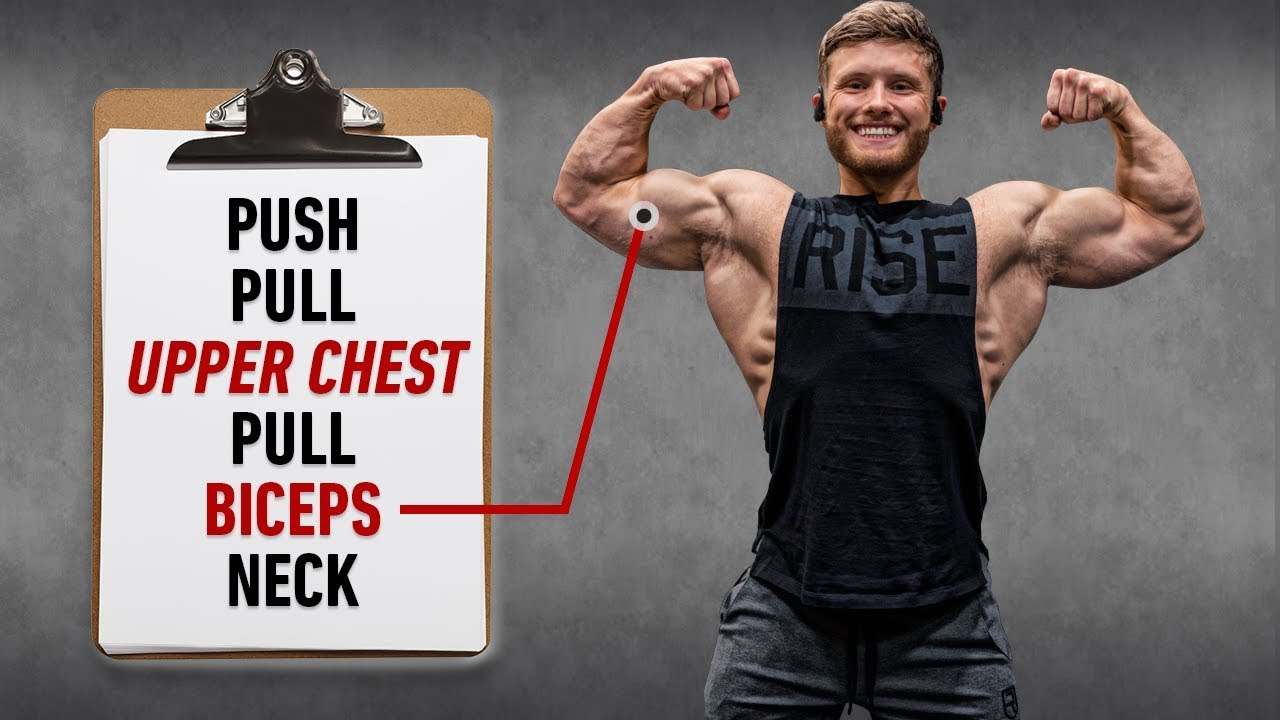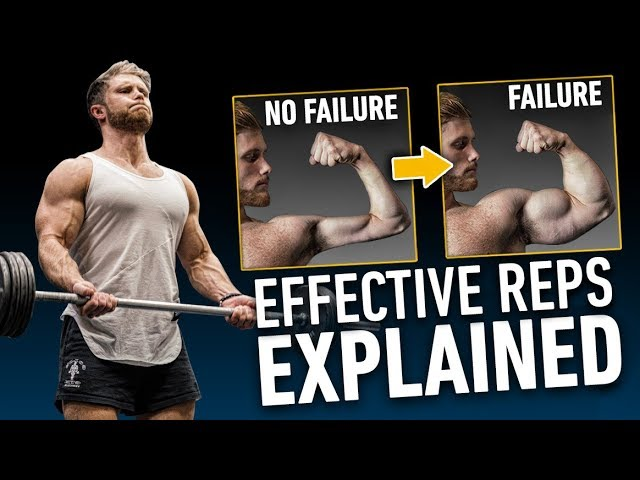Upper Body Hypertrophy and Strength: Inside a High-Volume Training Program
If you’re following a structured upper/lower split, balancing hypertrophy and strength can be challenging—especially when approaching the end of a long training block. Today, I’ll break down a high-volume upper body session from the final phase of a nine-week program designed to build muscle, improve pressing power, and prepare for max strength testing. I’ll also explain how the volume and intensity were strategically progressed over time using a wave-loading model.
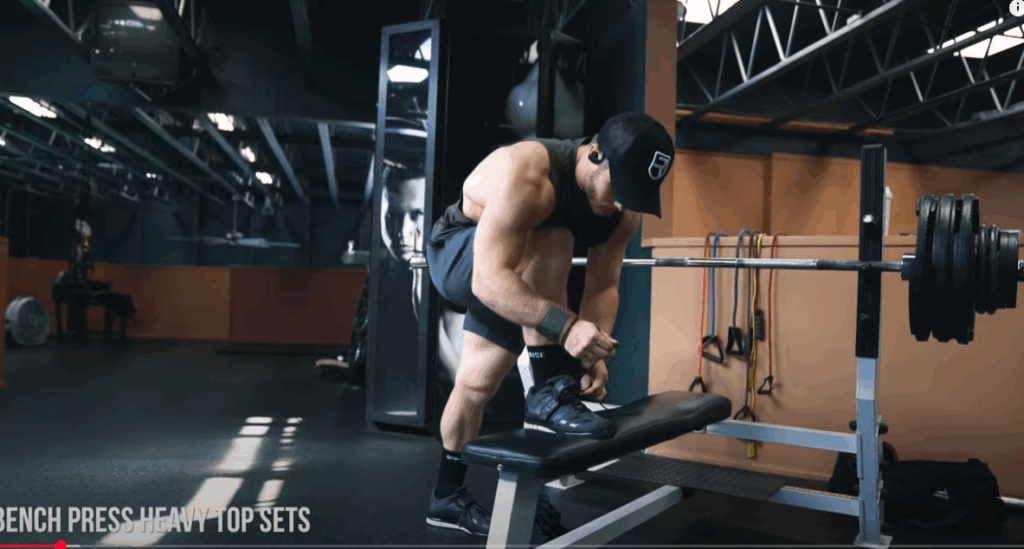
Final Phase of a Nine-Week Upper/Lower Split
This workout comes during week nine—the highest volume phase of the program. After this week, I’ll be testing my one-rep maxes, particularly on the bench press, to gauge progress. The goal of this session wasn’t just to build muscle; it was also to fine-tune neural efficiency and confidence under heavier weights.
Most of my training during hypertrophy phases sticks to 70–80% of one-rep max to accumulate more total volume, but in the final week, I introduced heavier top sets to prepare for max attempts.
Progressive Wave Loading: How Volume and Intensity Were Structured
The program follows a wave-loading model where training volume increases for three weeks before briefly dropping, then ramps back up again. This creates mini “deloads” that manage fatigue without fully pulling back training. Over nine weeks, intensity (load on the bar) gradually climbs, while volume cycles up and down:
- Weeks 1–3: Gradual volume accumulation at moderate intensity
- Week 4: Volume drops while weight slightly increases
- Weeks 5–6: Volume climbs again with the same weight
- Week 7: Volume decreases again as load increases
- Weeks 8–9: Final push with peak volume and the heaviest weights of the cycle
This method allows consistent progressive overload while avoiding burnout—perfect for lifters who want strength and size gains in the same program.
Workout Breakdown
1. Bench Press (Heavy Top Set – 2 Reps)
The workout opened with a heavy bench press double to prime the nervous system for the upcoming max test. I worked up to 315 pounds for two smooth reps, leaving several reps in reserve to avoid excessive fatigue. Heavy top sets like this aren’t for building muscle directly—they’re more for preparing the body to handle heavier weights confidently.
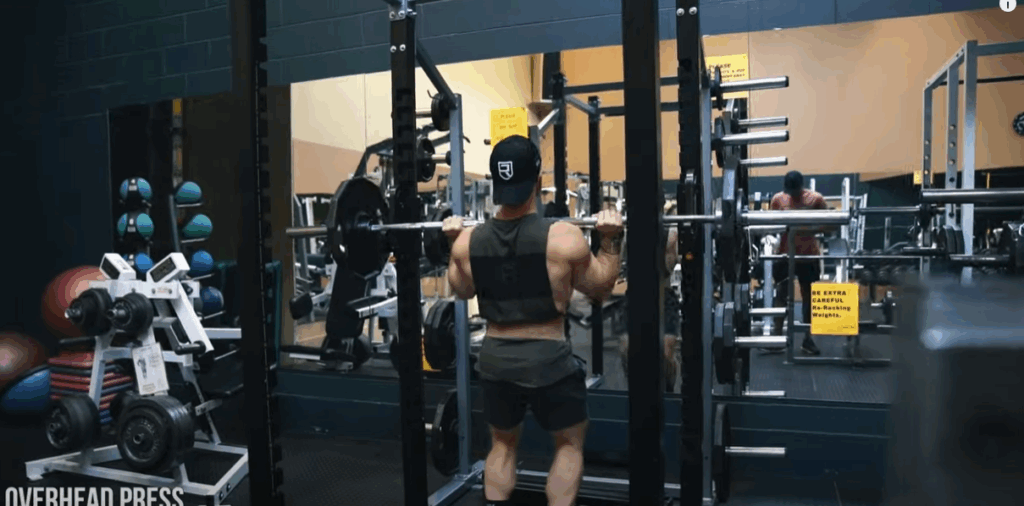
2. Overhead Press (4×4 at 145 lbs)
The overhead press (OHP) progression followed the wave-loading structure:
- Early Weeks: Two sets at 75% of max
- Middle Phase: Gradual set increases each week (up to four sets)
- Later Weeks: Load increased to 80% while cycling back to lower sets, then ramping volume again
The OHP is tricky because fatigue sets in suddenly, so I left two to three reps in reserve and increased sets rather than pushing to failure weekly. This keeps shoulder joints healthy while steadily building pressing strength.
3. Weighted Wide-Grip Pull-Ups (5×6)
Pull-ups were performed with 30 pounds added via a weight belt, staying two to three reps shy of failure on the first few sets. The key here is proper technique:
- Think elbows, not chin—focus on pulling elbows toward your sides rather than just getting your chin over the bar.
- Full range of motion—no half reps; squeeze at the top and control the eccentric phase.
By the fifth set, fatigue was high, and I was close to failure—exactly where I wanted to be for hypertrophy.
4. Close-Grip Bench Press (3×11)
Close-grip benching is excellent for triceps, lockout strength, and upper chest activation due to increased shoulder flexion. Key points:
- Grip Width: Around shoulder-width, not excessively narrow (which can cause wrist pain).
- Range of Motion: Greater than standard bench press, promoting more muscle growth.
- Progression: Reps increased weekly instead of adding weight.
Unlike a powerlifting bench, I used a moderate arch and tucked elbows slightly to emphasize triceps and upper chest involvement.
5. Pendlay Rows (3×10)
For back thickness and lat development, I opted for Pendlay rows rather than traditional bent-over rows. The strict, parallel-to-floor setup prevents cheating and increases lat range of motion.
Pro Tip: Pull the bar at a 45-degree angle to engage both mid traps (scapular retraction) and lats (shoulder extension).
6. Push-Ups to Failure (2 Sets)
Using plates to elevate hands for a deeper stretch, I hit 50 reps on the first set and 30 on the second. The slower, controlled eccentric made these far harder than standard push-ups. This simple bodyweight finisher added metabolic stress for chest, triceps, and front delts.
7. Banded Pull-Aparts (2×30)
To balance the heavy pressing volume, banded pull-aparts targeted rear delts and improved shoulder health. I added a slight external rotation at the top to fully contract the rear delts.
8. Biceps Isolation – Concentration Curls (3×10)
Although the program called for eccentric hammer curls, I substituted strict concentration curls to reduce forearm dominance and better target the biceps.
Cue: Drive through your pinky on the way up and maintain a loose grip to keep tension on the biceps.
9. Neck Training (3×20 Curls, 3×10 Extensions)
Neck work was included as a weak-point exercise. I gradually increased weight across sets to avoid post-session stiffness. Using a neck harness, I performed plate-loaded extensions, building up to 25 pounds for three sets of 10 reps.
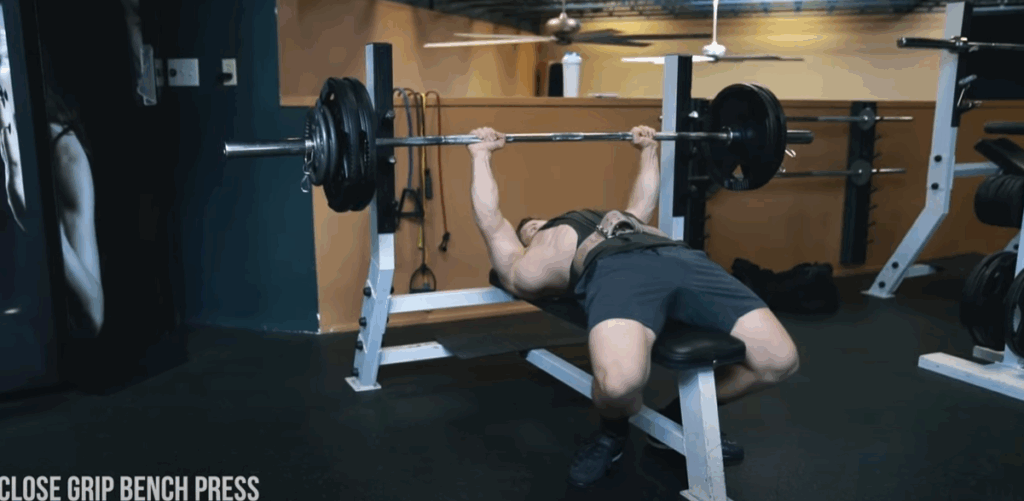
Why This Program Works
This nine-week structure perfectly blends hypertrophy and strength principles:
- Volume Cycling Prevents Burnout – The wave-loading model allows progressive overload while managing fatigue.
- Balanced Push-Pull Ratio – Pull-aparts and rows counter heavy pressing, protecting shoulder health.
- Heavy Top Sets Build Confidence – Occasional heavy doubles prepare for max tests without derailing hypertrophy progress.
- Accessory Movements Target Weak Points – Close-grip benching, Pendlay rows, and neck training address specific performance and aesthetic goals.
What’s Next?
After finishing this cycle, I’ll be testing my bench press max, aiming for at least 350 pounds. Following that, I’ll transition into a new full-body program designed for high-frequency training, which several lifters are already beta-testing with great feedback.
If you want a structured routine to build size and strength simultaneously, this upper/lower split—with its strategic volume cycling—is one of the most effective approaches you can run.


